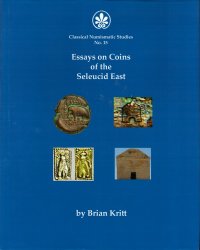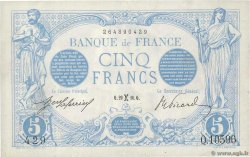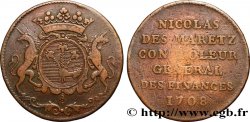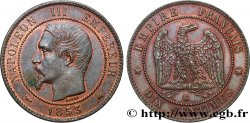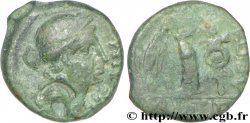上一页 1/1
lf30 - From Aï Khanoum to Samarqand. Seleucid Coins in Central Asia - Classical Numismatic Studies n°.13 KRITT Brian
62.00 €约 506.54 CNY
数量
加入购物车

作者 KRITT Brian
出版者 CNG
语言 Anglais
描述细节 Lancaster 2021, relié sous jacquette (21 x 26 cm), 106 pages, illustrations en couleur
重量 710 g.
评论
"The recent publication of ancient coins found at the site of ancient Samarqand sheds remarkable new light onthe little-known history of Sogdiana in the period following the death of Alexander the Great. Scholars have attempted to understand the status of this region during the period of the Seleucids and their Greek successors in Bactria, posing and unable to decide upon theories of whether Sogdiana fell under the control of these Greek dynasties.
Lacking any definitive ancient accounts, they turned to numismatics to try to decide the issue. Unfortunately, the finds of coins from the relevant period had been scant, and misunderstood. The new finds at Samarqand provide a dramatic parade of bronze coins struck at the Seleucid colony at Aï Khanoum in Bactria, spanning the entire period of the Seleucid presence in Bactria, and beyond. The succession of the known types of these coins is remarkably well represented at Samarqand, providing the first detailed picture of the relationship between Seleucid Bactria and contemporary Sogdiana.
The results include the discovery of a Greek colony at Samarqand in the Seleucid period, with extensive contacts and interaction with Aï Khanoum. The lack of such finds elsewhere in Sogdiana indicates that the Seleucids had no substantive contact with the non-Greek areas, and thus had no interest in the conquering of all of Sogdiana.
Another important piece of the historical picture is revealed by the results of the recent excavations at the archeological site of the Uzundara Fortress in southern Sogdiana. The extensive finds of bronze coins of Euthydemus at Uzundara show the status of affairs involving the Greeks and the uprisings of natives from the north in the period of the invasion of Bactria by the Seleucid king Antiochus III during his eastern campaign.
These and many other ramifications of these new coin finds are explored in Part A of this book.
Part B is an updated recording of the many new gold and silver coins of Aï Khanoum that have come tolight since the publication of The Seleucid Mint of Aï Khanoum in 2016, with the identification of the new dies, and their rational incorporation into the corpus which was established in that treatise..
\\\"The recent publication of ancient coins found at the site of ancient Samarqand sheds remarkable new light on the little-known history of Sogdiana in the period following the death of Alexander the Great. Scholars have attempted to understand the status of this region during the period of the Seleucids and their Greek successors in Bactria, posing and unable to decide upon theories of whether Sogdiana fell under the control of these Greek dynasties.
Lacking any definitive ancient accounts, they turned to numismatics to try to decide the issue. Unfortunately, the finds of coins from the relevant period had been scant, and misunderstood. The new finds at Samarqand provide a dramatic parade of bronze coins struck at the Seleucid colony at Aï Khanoum in Bactria, spanning the entire period of the Seleucid presence in Bactria, and beyond. The succession of the known types of these coins is remarkably well represented at Samarqand, providing the first detailed picture of the relationship between Seleucid Bactria and contemporary Sogdiana.
The results include the discovery of a Greek colony at Samarqand in the Seleucid period, with extensive contacts and interaction with Aï Khanoum. The lack of such finds elsewhere in Sogdiana indicates that the Seleucids had no substantive contact with the non-Greek areas, and thus had no interest in the conquering of all of Sogdiana.
Another important piece of the historical picture is revealed by the results of the recent excavations at the archaeological site of the Uzundara Fortress in southern Sogdiana. The extensive finds of bronze coins of Euthydemus at Uzundara show the status of affairs involving the Greeks and the uprisings of natives from the north in the period of the invasion of Bactria by the Seleucid king Antiochus III during his eastern campaign.
These and many other ramifications of these new coin finds are explored in Part A of this book.
Part B is an updated recording of the many new gold and silver coins of Aï Khanoum that have come to light since the publication of The Seleucid Mint of Aï Khanoum in 2016, with the identification of the new dies, and their rational incorporation into the corpus which was established in that treatise.
Lacking any definitive ancient accounts, they turned to numismatics to try to decide the issue. Unfortunately, the finds of coins from the relevant period had been scant, and misunderstood. The new finds at Samarqand provide a dramatic parade of bronze coins struck at the Seleucid colony at Aï Khanoum in Bactria, spanning the entire period of the Seleucid presence in Bactria, and beyond. The succession of the known types of these coins is remarkably well represented at Samarqand, providing the first detailed picture of the relationship between Seleucid Bactria and contemporary Sogdiana.
The results include the discovery of a Greek colony at Samarqand in the Seleucid period, with extensive contacts and interaction with Aï Khanoum. The lack of such finds elsewhere in Sogdiana indicates that the Seleucids had no substantive contact with the non-Greek areas, and thus had no interest in the conquering of all of Sogdiana.
Another important piece of the historical picture is revealed by the results of the recent excavations at the archeological site of the Uzundara Fortress in southern Sogdiana. The extensive finds of bronze coins of Euthydemus at Uzundara show the status of affairs involving the Greeks and the uprisings of natives from the north in the period of the invasion of Bactria by the Seleucid king Antiochus III during his eastern campaign.
These and many other ramifications of these new coin finds are explored in Part A of this book.
Part B is an updated recording of the many new gold and silver coins of Aï Khanoum that have come tolight since the publication of The Seleucid Mint of Aï Khanoum in 2016, with the identification of the new dies, and their rational incorporation into the corpus which was established in that treatise..
\\\"The recent publication of ancient coins found at the site of ancient Samarqand sheds remarkable new light on the little-known history of Sogdiana in the period following the death of Alexander the Great. Scholars have attempted to understand the status of this region during the period of the Seleucids and their Greek successors in Bactria, posing and unable to decide upon theories of whether Sogdiana fell under the control of these Greek dynasties.
Lacking any definitive ancient accounts, they turned to numismatics to try to decide the issue. Unfortunately, the finds of coins from the relevant period had been scant, and misunderstood. The new finds at Samarqand provide a dramatic parade of bronze coins struck at the Seleucid colony at Aï Khanoum in Bactria, spanning the entire period of the Seleucid presence in Bactria, and beyond. The succession of the known types of these coins is remarkably well represented at Samarqand, providing the first detailed picture of the relationship between Seleucid Bactria and contemporary Sogdiana.
The results include the discovery of a Greek colony at Samarqand in the Seleucid period, with extensive contacts and interaction with Aï Khanoum. The lack of such finds elsewhere in Sogdiana indicates that the Seleucids had no substantive contact with the non-Greek areas, and thus had no interest in the conquering of all of Sogdiana.
Another important piece of the historical picture is revealed by the results of the recent excavations at the archaeological site of the Uzundara Fortress in southern Sogdiana. The extensive finds of bronze coins of Euthydemus at Uzundara show the status of affairs involving the Greeks and the uprisings of natives from the north in the period of the invasion of Bactria by the Seleucid king Antiochus III during his eastern campaign.
These and many other ramifications of these new coin finds are explored in Part A of this book.
Part B is an updated recording of the many new gold and silver coins of Aï Khanoum that have come to light since the publication of The Seleucid Mint of Aï Khanoum in 2016, with the identification of the new dies, and their rational incorporation into the corpus which was established in that treatise.








 对产品描述纠错
对产品描述纠错 打印
打印 分享我的选择
分享我的选择 提问
提问
 产品介绍
产品介绍
